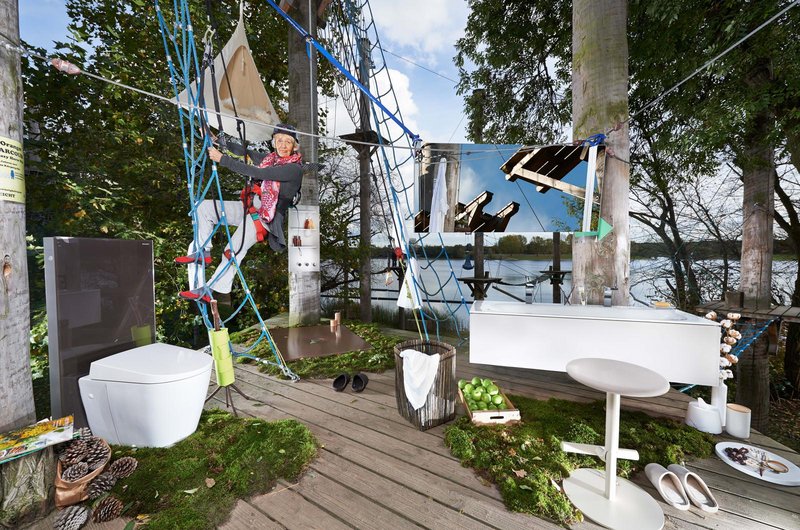
Best Ager_ Freibad
When every step requires careful consideration so as not to stumble, security and safety mean freedom. Freedom from bothersome safeguards and inconvenient fuss, freedom of movement and the freedom that comes with numerous options.
A bathroom designed for ease – at any age
When every step requires careful consideration so as not to stumble, security and safety mean freedom. Freedom from bothersome safeguards and inconvenient fuss, freedom of movement and the freedom that comes with numerous options. A fi nely-meshed safety net made up of familiar surroundings, technical equipment and barrier-free housing gives people a sense of security and ease. And that sense of ease should be expressed in the design of the Easy Bathroom too: for all its technical sophistication, it must be simple and intuitive to use as well.
People who have to cope with physical or agerelated limitations of any kind know just how important a freely accessible, safe and easy-touse bathroom is when it comes to their independence, fi tness and wellbeing. Th ey enjoy the eff ect the water has on their health and soul, the comfort and convenience of a shower toilet, the feeling of safety and security that comes from furniture, seating and grab rails designed to provide support and the benefi ts of good, possibly even sensor-controlled lighting systems. Level-access showers and enough space to ensure freedom of movement are basic prerequisites for allowing elderly people to furnish their bathrooms in a way that accommodates not just their individual preferences but their (future) needs as well. Just in case.
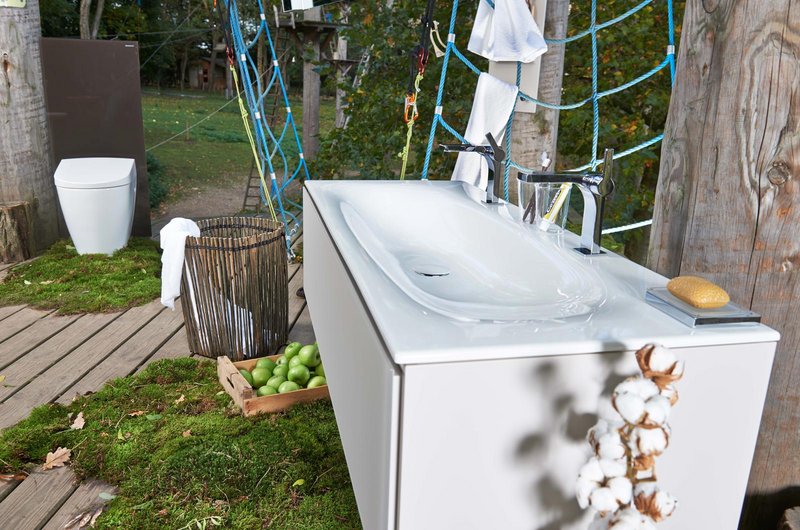
_ Cleanliness Made Easy
In the bathroom, we’d rather have things clean and hygienic – especially in old age, when we don’t want to train our immune system so much as go easy on it.
Cleanliness Made Easy
Sure: children need contact with dirt and germs to develop a healthy immune system. But in this context, we prefer to think of soil, stroking dogs or contact with peers. In the bathroom, we’d rather have things clean and hygienic – especially in old age, when we don’t want to train our immune system so much as go easy on it.
How unfortunate, then, that water, steam, splashes and lots of hot air are not only ideal for agreeable grooming but can create the kind of subtropical climate that is an optimal breeding ground for germs and bacteria as well.
Th is and the debate about hospital bugs and flu epidemics is leading to a growing desire for even more cleanliness in the bathroom. Obviously hygiene precautions in a private bathroom are diff erent than in the public sphere, but why not benefi t from the advantages and achievements of modern sanitary technology at home too?
When it comes to general hygiene culture, Europe seems to have reached a turning point. For whilst hygienic fi nishes and products are already taken for granted in Asia and the USA, it is only now that the demand for innovative ceramic or glass fi nishes, rimless toilets or shower toilets has – rather belatedly – started increasing in this part of the world too – not just in the contract sector but in private bathrooms as well.
Aft er all, as a potential carrier of germs and bacteria, the toilet is probably the focal point of any family’s hygiene measures. There are three potential lines of approach: opting for a hygienic ceramic fi nish or an appropriately equipped toilet seat is a good way to counteract soiling. Some of the innovative new fi nishes feature the nanotechnology known as the lotus eff ect and are designed to prevent anything adhering to the surfaces. Then there are the rimless toilets that are such a talking point right now: by doing away with the rim, they also eliminate what can be a favourite spot for germs and bacteria. In the meantime, most producers of bathroom ceramics off er this type of toilet. Nor do toilet fresheners have to be hung over the rim anymore; they can just as easily be placed in the pre-wall installation next to the flush, where they are not only invisible but easy to refill. Finally, shower toilets go one step further: they have to do with personal hygiene per se. Various models are already available from several suppliers and, when it comes to hygiene and usability, promise a level of convenience that sets itself apart from the former standard.
Flat, hygienic surfaces for showers and washbasins, with an optional antimicrobial coating if desired, further reduce the potential for germs and bacteria to gain a foothold in the bathroom. Touchless taps and fi ttings are also a sensible option for the private sphere – not just for hygienic reasons. Besides minimising potentially infectious interfaces with other members of the family, they also help save water – not to mention the fact that they’re fun to use, especially for youngsters.
And anybody who dreams of simply detaching the fi ttings from the water connection and putting them in the dishwasher when they need a thorough clean needn’t look too far into the future – they already exist. Really
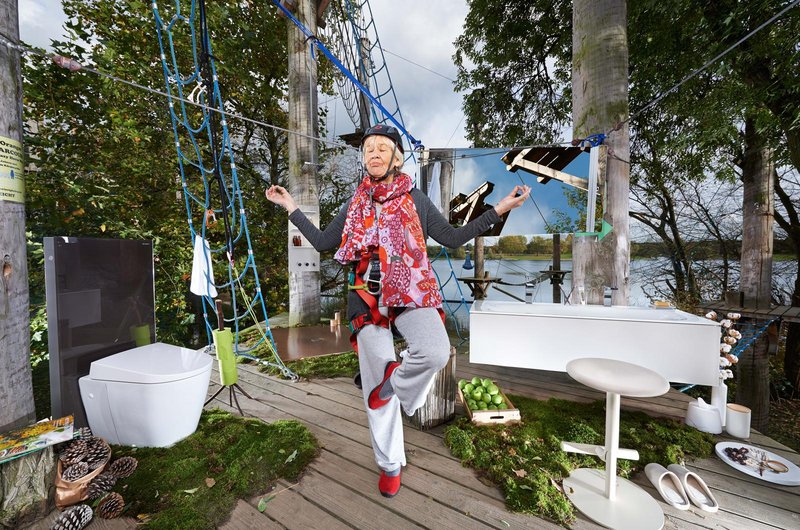
_ Perfectly Normal
Image change: bathrooms for elderly people eliminate barriers of all kinds
Perfectly Normal
Let’s be honest: barrier-free bathrooms don’t exactly have a sexy image. Most people associate them with a small, “disabled-friendly” tiled room dominated by grab rails, a minimalist ambience and the dubious charm of hospital furniture. However, it looks as if this image is about to undergo some fundamental changes over the next few years.
For one thing, not even bathrooms that conform to the standardised defi nition of “barrier-free” have to look anywhere near as austere as they did just a few years ago. Because there’s much more to barrier-free accessibility than the specifications laid out in the relevant standards. It starts with an open, spacious design that can be adapted to lots of diff erent individual interests and makes allowances for future care situations with level access showers and modern features like sensor-controlled fi ttings and lighting systems, programmable water settings or easy-care fi nishes. But the future is set to be even more convenient, comfortable and lifestyle-friendly – as will be apparent at the coming ISH, the world’s leading trade fair for water and energy technology. Because in a future where 50-yearolds represent a society’s average age, living in an attractive home and aging independently should certainly no longer be regarded as mutually exclusive. As the key room for maintaining independence, the bathroom for the older age group will feature just as much design and convenience as “normal bathrooms” – but probably even more assistive technology and systems.
“Our goal shouldn’t just be to make barrier-free bathrooms more attractive and functional,” argues Jens J. Wischmann, Managing Director of the German Sanitary Industry Association (Vereinigung Deutsche Sanitärwirtschaft e.V. [VDS]), “but to design them as ‘normal’ bathrooms. In an inclusive society, the distinction between ‘normal’ and ‘barrier-free’ will become less pronounced anyway. And working towards that goal is no longer a question of aesthetics and the performance principle – it’s a question of our society’s survival,” says Wischmann.
Th e future is barrier-free – and it all starts in the mind
As society’s demographic structure changes, elderly people’s self-image will change too. They won’t just work longer – either because they have to or because they want to – they will see themselves as active and formative members of society for longer too. Th e younger generation’s care mentality will have to adapt to its parents’ generation’s strong desire for self-determination. Th at also includes the right to take risks – for instance by maintaining one’s own household despite age-related health concerns. Reconciling the diff erent interests of younger and older generations and creating the prerequisites for living a self-determined life well into old age will be one of society’s most diffi cult challenges.
With the current campaign from its experimental trend platform Pop up my Bathroom, the VDS aims to put the idea of a life-stage-friendly bathroom up for discussion and thus dust off the image of barrier-free accessibility in the minds of designers, manufacturers, bathroom planners and consumers. And in view of the latest forecasts on demographic change in Germany, bathroom design for the elderly is certainly a topic that deserves special attention.
Rapid demographic change calls for rapid adjustment – in housing too
The data indicates that demographic change in Germany will be even more dramatic than previously thought. In November 2014, one current database led Prof. Dr. Eckart Bomsdorf of the University of Cologne’s Institute of Econometrics and Statistics to publish the prognosis that the number of gainfully employed Germans will drop from 50 million today to 36 million by 2060 – by which time every second German will be at least 51 years old. Th ere will also be more very elderly people aged 90 or older – around 3.3 million of them as compared to the current fi gure of 650,000. Th is will have an impact not just on how pensions are fi nanced but on the infrastructure of education, the housing industry and the health system as well.
At the same time, there will also be more people in need of care. Germany’s Federal Statistical Offi ce anticipates a fi gure of 3.4 million by 2030. Since the majority of care recipients are looked aft er at home, a safe and convenient bathroom plays a crucial role in this context too.
German bathroom concepts as role models – an opportunity not to be missed
And Germany is not alone: the phenomenon of falling birth rates accompanied by an increase in life expectancy is being observed all over the world. Whilst in many countries the dynamics of population growth are unstoppable, populations in other parts of the world are shrinking – especially in the OECD countries of Europe and North America. Although this same demographic development is manifesting itself in other highly developed industrial nations like Japan or Italy too, it is making itself felt a little earlier and in more concentrated form in Germany – which therefore has the opportunity to serve as a role model for the accelerated adjustment processes required.
Germany’s sanitary industry is already rising to the challenge of adapting the bathroom to future requirements: besides its “Barrier-free Bathroom Campaign”, it is also participating in the development of intelligent bathrooms. Even today, the technical possibilities already exist for bathroom models in which the toilet automatically adapts to people of diff erent sizes, the mirror display provides guidance for taking medication and ambient aids make life both easier and safer. Besides basic requirements like freedom of movement and more space, there are various other aspects to generation-specific design that are helpful to all users, such as atmospheric lighting, a sensor-controlled nightlight, slip-resistant surfaces, level-access showers and seating for resting and chilling.
“Freibad” – a fresh approach to the barrierfree bathroom
Pop up my Bathroom is exploring the needs that should be taken into account by any bathroom concept designed for a specific life stage. Th e concept of the multigenerational bathroom whose design is suitable for as many diff erent target groups as possible is only the fi rst step in these considerations towards a variable bathroom. In future, variable floor plans and modern installation systems will be able to increase the bathroom’s versatility to such an extent that, provided the renovation options and space available meet the necessary requirements, it will be more than able to adapt to its users’ lives. The “Frei” component of the “Freibad” motto is synonymous with freedom, independence and joie de vivre. “Freibad” aims to achieve greater acceptance for the concept of the barrier-free bathroom – with unconventional perspectives on the bathroom as a place where people can lead their lives and live their dreams no matter what situation they fi nd themselves in.
The bathroom is where individualistic interior lifestyle comes face to face with key needs: hygiene, relaxation and the opportunity to experience one’s own body. Th ese functions will play an even more important role when it comes to ensuring continued wellbeing and independence in our old age. Because the bathroom doesn’t just help us cope with the day, it helps us cope with our entire lives – a complex function that turns the design of this space into a highly challenging assignment.
Bathroom planners and tradespeople play an indispensable role
As a result, ambitious tradespeople and professional bathroom planners are playing an increasingly important role as well. Because an adaptable bathroom that permits both individual zones and barrier-free elements (or at least allows for their installation later on) whilst still taking users’ individual needs into account calls for a great deal of professional advice – even if tried-and-tested models will certainly make it easier to transfer this concept to a ‘normal’ bathroom. “We want to use imaginative scenarios like Pop up my Bathroom, as well as experiments and collaborations with the trades, industry, architecture and research, to develop a life-stage-friendly bathroom,” says Jens J. Wischmann, summing up one of the key challenges the sanitary industry will face in future. “We aim to make it a recipe for success in changing societies.”
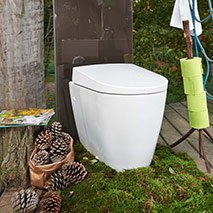
Deluxe comfort package: the luxury toilet from Geberit combines a bidet function with the convenience of remote control, air purifi cation, mood lighting and a soft-touch flush.
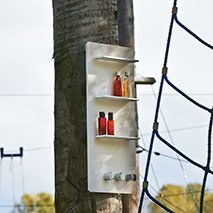
The innovative meTime_spa shower panel (available in upright or landscape format) is the height of ingenious multifunctionality.
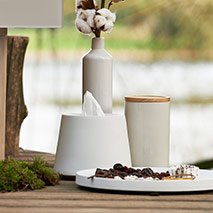
The Edition 11 accessories in matt bisque porcelain radiate a sense of size, power and sensuousness.
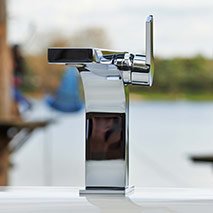
Th e single-lever mixer from Keuco’s Edition 11 conveys a modern aesthetic and a reassuring sense of taking things in hand.
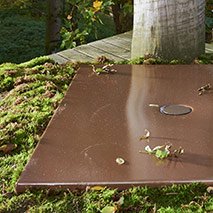
Thanks to its floor-level installation, the Bette-Floor shower is extremely easy to get in and out of.
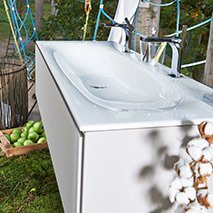
With its big all-round ledge and three sizes, Keuco’s Edition 11 washbasin provides individual and creative planning potential for bathrooms of any size.